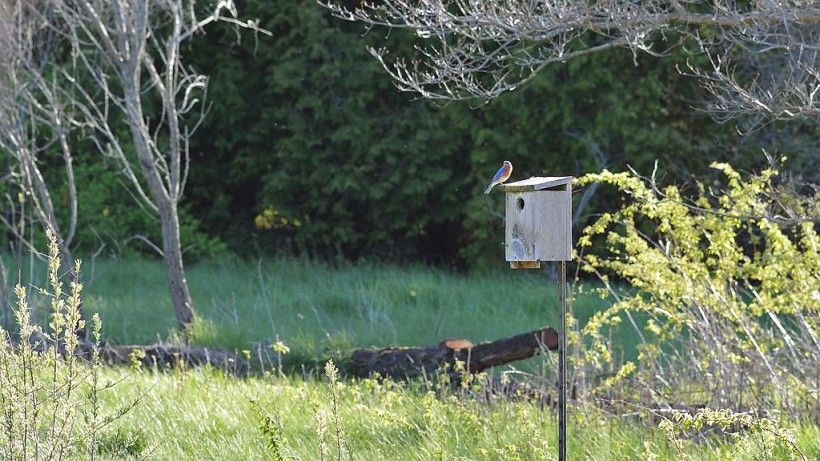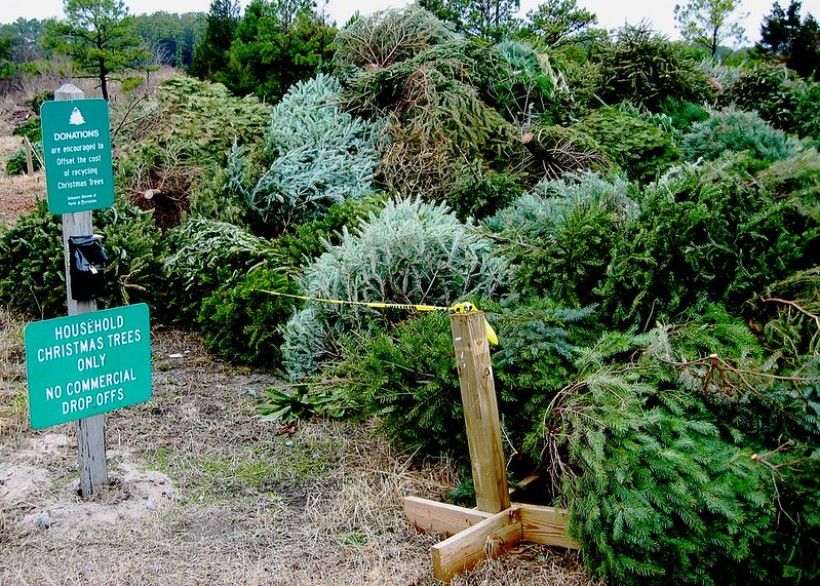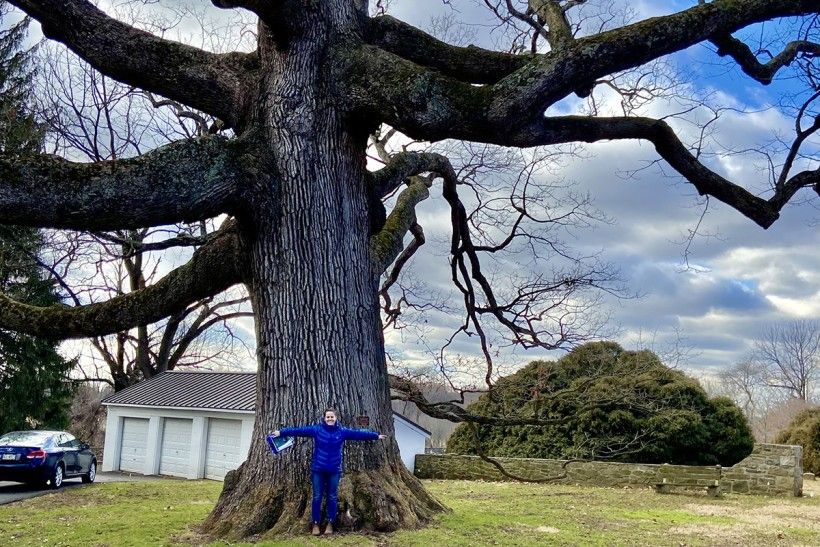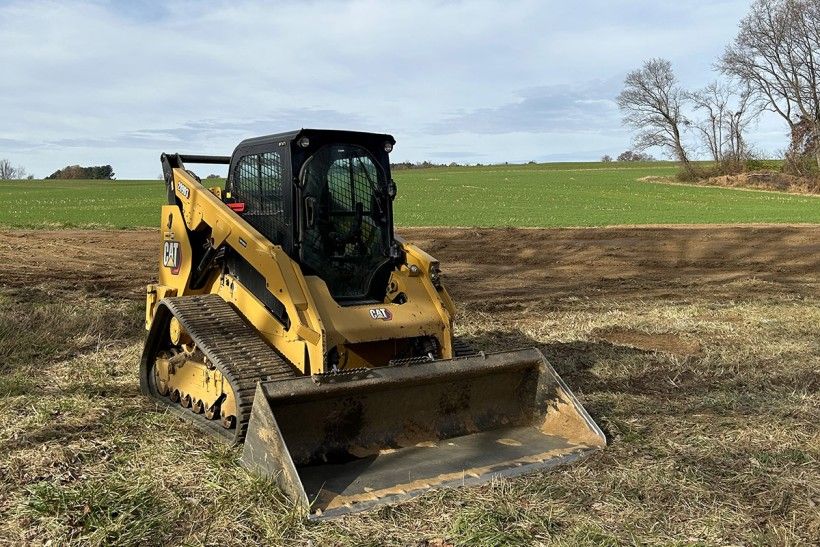
Directors' Report
Dear Fellow Conservationists,
The end of 2023 is upon us and for many it is a time to reflect, prepare for the coming winter months, and embrace the holiday season. We are pleased to share with you this winter edition of Environmental Currents that echoes these elements with articles on winter from a farmer’s perspective in our continuing Agriculture Spotlight series, a reflection on the loss of the London Grove Meeting House’s Penn Oak, and tips on sustainable ways to dispose of your Christmas tree once the holidays are over.
In addition to learning how to support our environment when disposing of Christmas trees, you can also read about Penguin Court Preserve’s bluebird nesting box revitalization and what we’ve learned from the project, and find out how to assist with the control of invasive Norway Maple trees and the commitment we can all make to plant native alternatives.
In this issue you are also invited to take action to help plan for the future of the Brandywine Creek Greenway by participating in our newly launched public survey. The Greenway is undergoing a strategic planning process that will help guide the initiative for another 10 years. We also hope you’ll enjoy learning about our new planning projects (Mason-Dixon/Arc Corner Heritage Interpretation and Connectivity Plan) and the next feature in our continuing blog series about our local Piedmont geographic region—this time focusing on the rare and fascinating Serpentine Barrens.
Thank you for reading this issue and, more importantly, all the ways you have partnered, supported, and advanced conservation and preservation successes this year. Our landscape is ever more precious and cherished due to all we have accomplished together in 2023, which inspires us for an exciting new year ahead!
From all of us at the Brandywine Conservancy, we wish you happy and safe holidays!
— Stephanie and Grant
Stephanie Armpriester, Director of Conservation and Stewardship
Grant DeCosta, Director of Community Services
New Lease on Life: Revitalizing Penguin Court's Bluebird Trail

The Brandywine Conservancy's Penguin Court Preserve recently revitalized a 1.3 mile bluebird trail along its grounds, demonstrating the importance of predator guards and careful bird box placement. In the following guest article by D. Scott Jones, learn more about these recent changes, lessons learned, and the success that followed.
Click here to read more
Invasive Species Spotlight: Norway Maple

The Norway Maple (Acer platanoides) is a classic example of an invasive tree—with ties to the early American nursery trade, it was planted extensively in North America for its aesthetic appeal and horticultural value before eventually spreading into natural areas where it disrupts native plant communities.
Click here to read more
Brandywine's Climate Corner: Sustainable Christmas Tree Disposal Ideas

Buying a real Christmas tree can be a great sustainable way to deck the halls and bring home some holiday cheer. Not only are trees powerful tools for absorbing and storing carbon, they also filter other pollutants in our air and water and provide important habitat for wildlife. According to the National Christmas Tree Association, for every Christmas tree harvested, one to three new seedlings are planted to ensure consistent supplies for upcoming years. This means, by purchasing from a local tree farm, not only are you helping to support local agriculture and forestry, you are also supporting the planting of more trees.
But sustainability doesn't stop there. When the holidays are over and it's time to take the tinsel down, there are multiple sustainable options for disposing of your tree. Read on for some ideas of how to recycle your real tree, what to do with an artificial tree that's past its prime, as well as some tips on what to avoid.
Click here to read more
Community Mourns Loss of London Grove Penn Oak

During a relatively calm day on September 19, the majestic and beautiful Penn Oak located at London Grove Meeting House fell. This 300+ year old White Oak (Quercus alba), believed to have been around when William Penn came to Pennsylvania in the late 17th Century, was a sight to behold at 80+ feet tall, with a circumference that exceeded 22 feet at its base, and an impressive spread of 120 feet.
Given its monumental size, the tree was recognized as the Champion (the largest) White Oak in the Commonwealth. For anybody who had been in its presence, the title of Champion was well-deserved. Along with the local community and those who have cared for her, the Brandywine Conservancy mourns the loss of this special and historic tree.
In memory of this great tree, and if you have the room, consider planting a White Oak on your own property. Oaks support more life forms than any other native tree species, dwarfing those of other species. Oak species in the United States (not just those found in our area) support 897 caterpillar species (by comparison, maples support 295 and sweetgum just 35), with local ecologist, Doug Tallamy, recording 511 on oak trees on his 10-acre property in Delaware. In addition, their leaf litter and acorns support a wide web of additional life forms.
If you want to learn more about champion trees, be sure to check out www.pabigtrees.com, which allows you to search for champion trees throughout the state and select for genus (Quercus vs. Acer vs. Platanus), species (Quercus alba vs. Quercus rubra), and location. However, be aware that many may be on private property, so be sure to only visit those on publicly accessible lands such as local parks, public arboretums, or botanical gardens.
Piedmont Vegetation Spotlight: Serpentine Barrens Complex

Join us as we continue our exploration of the vegetative communities of the Piedmont region of the Eastern United States! In this new series of blogs, we'll be spotlighting specific vegetative communities, define their historic structures, describe the processes that created them, examine past and ongoing threats to their survival, and provide suggestions for long-term, sustainable forest management to help steward them into the future. In this spotlight, we’ll highlight Serpentine Barrens—a complex of vegetative communities that is unknown to many people, even those who live close to them, yet is incredibly biodiverse and host to many local unique species of flora and fauna.
Click here to read more
Agriculture Spotlight: Winter

Winter is officially upon us. Crops have been harvested and now is the time to prepare for next season’s yield. Some may think that this is when farmers slow down and take a break, but there is never a lull in the life of an agriculturalist. Work continues throughout the colder months to ensure the next growing season is just as, if not more, successful than the last.
Click here to read more
Mason-Dixon/Arc Corner Heritage Interpretation and Connectivity Plan Kick Off

The end of October saw the official start of the Mason Dixon / Arc Corner Heritage Interpretation and Connectivity Plan (MD HIP). Though the title may be a mouthful, it very aptly describes the information to be included in the final report. This multi-municipal plan will focus on identifying heritage themes and connections between interpretative sites within New Garden, London Britain, Franklin, and Elk Townships. The Brandywine Conservancy, joined by team members from Heritage Strategies and Miller Designworks, will work to identify interpretive sites associated with the themes that draw from the rich history of these southern Chester County townships.
As the name suggests, one theme set to be interpreted is the Mason-Dixon line. Known to many as the demarcation between north and south, free and enslaved, the original survey for the line began before the United States existed as a sovereign nation. When British kings granted lands to Lord Baltimore (Maryland) and William Penn (Pennsylvania) in the 1600s the proprietary grants contained overlapping boundary descriptions leading to conflict between the two colonies. This eventually resulted in the four-year survey performed by Charles Mason and Jeremiah Dixon in 1763. While a main theme for interpretation within this region, numerous other topics including agricultural heritage will be explored and analyzed for inclusion in the report.
Modeled after the completed Brandywine Battlefield Heritage Interpretation and Connectivity Plan, MD HIP takes a layered approach to the interaction of visitors with the heritage themes of the region as well as their movement through the landscape. Places for interpretation range from large Gateway centers that provide several visitor amenities and an in-depth examination of key themes to Interpretive Sites that are single points of interpretation scattered across the landscape. Gateways provide visitors with an overall introduction to the region’s history and while not specifically a part of this project, some may be identified for future feasibility studies.
From Gateways, visitors disperse to smaller Heritage Centers where amenities such as restrooms are still present but where the information addresses specific topics within an over arching theme such as women’s roles, Native American culture, or other themes. Heritage Centers, a primary component of this plan, will lead visitors to specific Interpretative Sites where the history is not only written on panels or kiosks but is experienced through the adjacent landscapes and buildings.
Moving through the landscape—past open spaces, historic places, and between sites-—provides individuals with a unique understanding of areas as they once existed, and the history that led to how they exist now. Beyond identifying heritage themes and interpretative sites, another goal of this report is to look at modes of moving between locations. Cars provide the main source of transportation for a vast majority of Americans and while it may be the primary means of connecting sites, other modes such as pedestrian, cycling, and equestrian will be analyzed. This is where the “Connectivity” part of the report title comes in. Within the report, multi-modal connections between sites will be reviewed and potential routes identified. Providing opportunities to learn and experience places outside of a vehicle allows visitors the opportunity for deeper connection, more inclusion, and further enjoyment of all the region has to offer.
The report is expected to take around 18 months to complete. Several task-force meetings with township partners, and public meetings in the region are planned to be held throughout the process.
Planning for the Future Along the Brandywine Creek Greenway

The team behind the Brandywine Creek Greenway—a regional planning initiative managed by the Brandywine Conservancy—is currently conducting public outreach and working with municipal, county and non-profit partners to update its Strategic Action Plan to continue to be a guiding document for the next 10 years. By circulating a survey, conducting a series of public workshops, and participating in local community events, the Greenway team will collect public input on the needs of its local communities to ensure that the planning and prioritization of new facilities and projects are relevant to the communities they serve.
Click here to take the survey!
Serving 29 townships in Pennsylvania, Delaware, and the communities along the entire 40 miles of the Brandywine Creek, the Greenway strives to foster conservation of historic and natural resources and preserve open space, while increasing recreation opportunities, access and development of trails and trail connectors to support the growth our vibrant local economies.